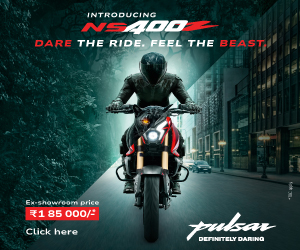 No, the Apache won’t have six-pack, but will be safer to ride
No, the Apache won’t have six-pack, but will be safer to ride
Early this year TVS Motors showcased the Apache 180 with ABS (anti-lock braking system) technology during the Auto Expo and, almost a year later, the bike sporting this safety technology will be available in a TVS showroom close to you this month (January 2011). We reckon the new Apache with ABS to be about Rs 2,000 to Rs 3,000 dearer. Though ABS is common in bikes and cars internationally, we still have a reason for a tiny celebration. This will be the first time a ‘made in India’ bike will feature ABS. Hurrah!
TVS have developed the anti-lock braking system in collaboration with Continental AG, Germany (pioneer in chassis control system for passenger cars and leading bikes like the BMW). The system has a hydraulic-electronic control unit (HECU) and a speed-sensing technology that continuously monitors the wheel speed of the bike. During braking it modulates the hydraulic pressure in the brake system to avoid an impending wheel lock and loss of control.
The ABS system improves braking even in wet conditions, prevents wheel skids and rear wheel lift-off. So, all you guys who love to perform ‘stoppies’ on their Apaches, TVS have made the trick even harder for you.

 Ever since the VFR1200F has landed, certain questions have been raised and tried to be answered. BIKE India’s Adhish Alawani spent some time in the saddle of Honda’s road tourer. Three days, 1,000 km and almost 100 litres of fuel later, he tries to answer the salient among those questions
Ever since the VFR1200F has landed, certain questions have been raised and tried to be answered. BIKE India’s Adhish Alawani spent some time in the saddle of Honda’s road tourer. Three days, 1,000 km and almost 100 litres of fuel later, he tries to answer the salient among those questions








 As reported in BIKE India earlier, the YBR 125 signifies Yamaha’s serious intentions for the commuter class. Piyush Sonsale test-rode this new bike prior to recording his impressions
As reported in BIKE India earlier, the YBR 125 signifies Yamaha’s serious intentions for the commuter class. Piyush Sonsale test-rode this new bike prior to recording his impressions





 Honda fly Adhish Alawani to Thailand and give him a taste of their latest offering in the form of a quarter-litre machine – the CBR250R. Should the competition fear slaughter?
Honda fly Adhish Alawani to Thailand and give him a taste of their latest offering in the form of a quarter-litre machine – the CBR250R. Should the competition fear slaughter?








 Why is it that powertrain evolution in motorcycles has not kept pace with that in motor-cars? Were attempts made to devise bikes with front-wheel or both-wheel drives? Intrigued by these questions, Piyush Sonsale decided to dip into motorcycle history. As he garnered fascinating information, he also got in touch with companies involved in such innovations overseas to get a complete picture
Why is it that powertrain evolution in motorcycles has not kept pace with that in motor-cars? Were attempts made to devise bikes with front-wheel or both-wheel drives? Intrigued by these questions, Piyush Sonsale decided to dip into motorcycle history. As he garnered fascinating information, he also got in touch with companies involved in such innovations overseas to get a complete picture 














